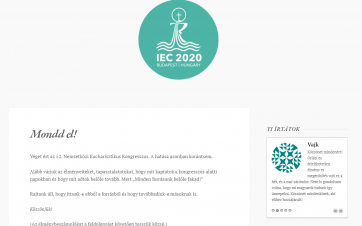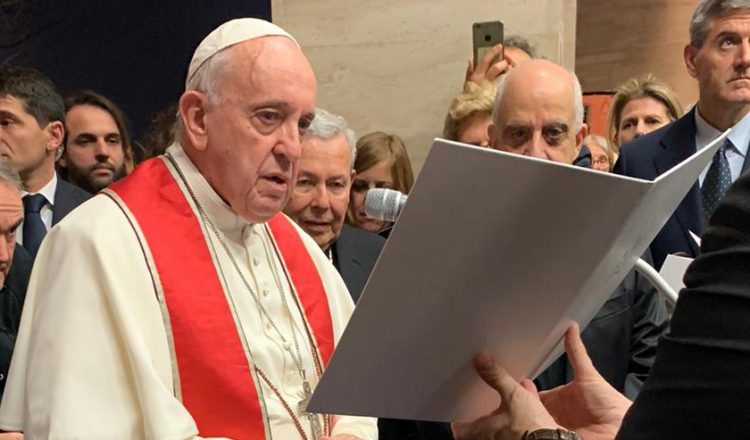
Hungarian children sing carols to the Holy Father

Hungarian youngsters sang to the Holy Father, who made a visit to the ‘100 Nativity Scenes’ exhibition in the Vatican. The chamber choir of the Budapest-based Kodály Zoltán Hungarian Choir School, conducted by Borbála Sapszon, also sang a popular Christmas carol in Spanish, which is highly popular in South America and is one of Pope Francis’ favourite carols. The Holy Father enjoyed the performance evoking the atmosphere of the Christmases of old as well as highlighting the significance of next year’s International Eucharistic Congress, not to mention encouraging the faithful to participate in the week-long series of events which will take place in Budapest.
Pope Francis also mentioned that according to the information received by him, Hungary’s demographic indicators have taken a positive turn. In response, Ferenc Cserháti, auxiliary bishop of Esztergom-Budapest, responsible for the pastoral care of Hungarian expats, said: ‘Thank God, families in Hungary receive substantial support, and the strengthening of Christian culture is also noticeable. I hope that the Budapest International Eucharistic Congress will also contribute to the renewed flourishing of Christianity. We hope to welcome the Holy Father in Hungary and to enjoy his support for this objective and our related plans.’
The ‘100 Nativity Scenes’ exhibition in the Vatican was opened yesterday by Archbishop Rino Fisichella, President of the Pontifical Council for Promoting New Evangelisation, Eduard Habsburg-Lothringen, Hungary’s ambassador to the Holy See and Ferenc Cserháti, auxiliary bishop of Esztergom-Budapest. At the opening ceremony the chamber choir of the Kodály Zoltán Hungarian Choral School sang Hungarian traditional carols (Csordapásztorok, Ó gyönyörűszép titokzatos éj, Dicsőség mennyben az Istennek) and performed a scene of a nativity play.
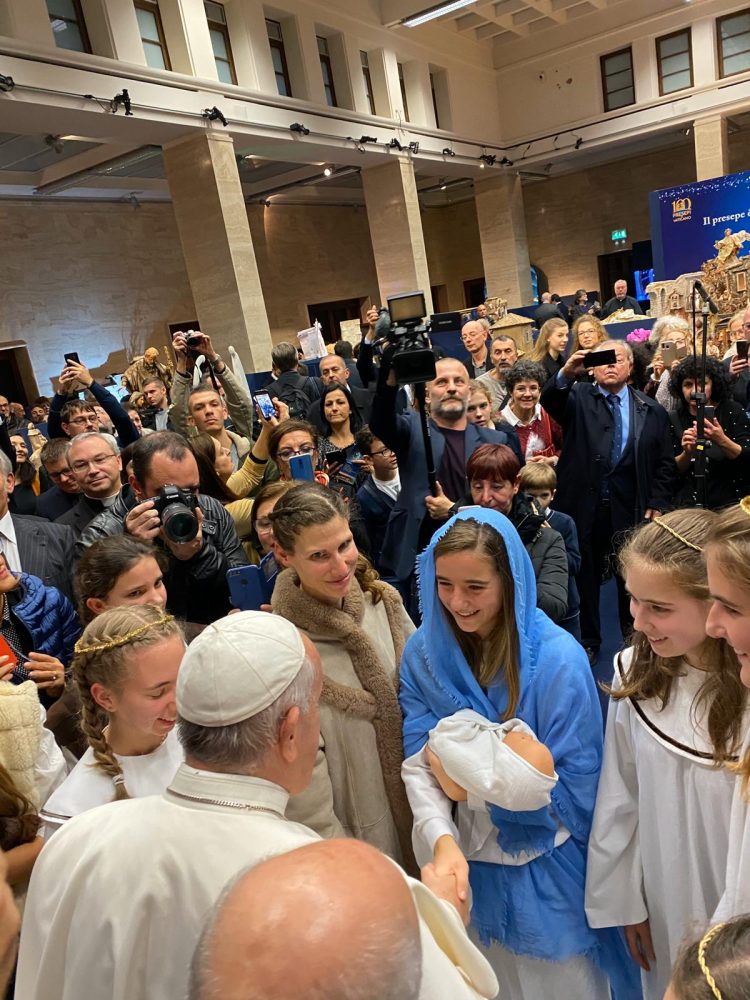
The guest of honour: Hungary
Archbishop Fisichella called this year’s exhibition of nativity scenes a special occasion, particularly due to the apostolic letter Admirabile signum issued by Pope Francis on 1 December. Rino Fisichella solemnly handed over an original copy of the document signed by the Holy Father in Greccio to ambassador Eduard Habsburg-Lothringen, who in turn expressed his gratitude for the invitation to Hungary to participate in this year’s ‘100 Nativity Scenes’ exhibition as a guest of honour. Eduard Habsburg-Lothringen emphasized the importance of the International Eucharistic Congress to be held in Budapest, and explained the specificities of typical Hungarian nativity scenes and nativity plays to the Roman and international members of the audience.
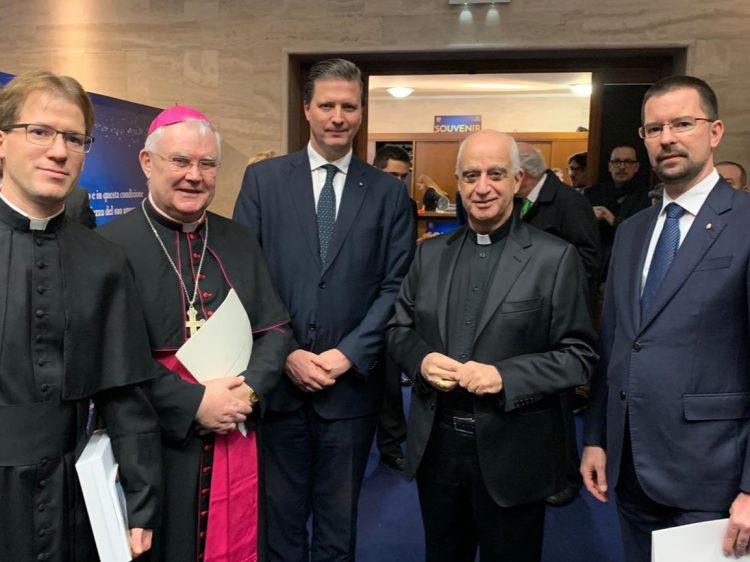
The role of nativity scenes in spreading the faith
Auxiliary bishop Ferenc Cserháti began by transmitting the greetings of Cardinal Péter Erdő to all those present, then expressed his gratitude to Archbishop Fisichella. Then he also went on to highlight the significance of Pope Francis’ apostolic letter Admirabile signum, according to which ‘nativity scenes play an important role in spreading the faith’. Bishop Cserháti also said that ‘the presence of Hungarian nativity scenes and of the Kodály Choir School constitutes a beautiful example of this fact. This is why we have chosen this choir to bring you the message of the International Eucharistic Congress, which will take place in Budapest from 13 to 20 September 2020. Through their songs, they reinforce in us the true meaning of Christmas: the Child Jesus, whom we see in the manger, is the same (risen) Christ, whom we adore and celebrate in the Eucharist. In today’s secularised Europe, the International Eucharistic Congress aims at promoting a clear profession of faith. I believe that nativity scenes/mangers may be useful tools in doing so, particularly if we consider the Holy Father’s words: the nativity scene ‘teaches us to feel and believe that God is with us and that we are with him, thanks to that Child who is the Son of God and the Son of the Virgin Mary, and to realize that in that knowledge we find true happiness. This is the same happiness as the one expressed by the motto of the International Eucharistic Congress: “All my springs are in you.”
Ferenc Cserháti reiterated the invitation of Cardinal Péter Erdő and the Hungarian Catholic Bishops’ Conference to the Holy Father to the Congress.
Nativity scenes and the Eucharist
The link between the custom of setting up nativity scenes and the Eucharist was not only present in the solemn opening of the exhibition but is also highlighted in the following part of the apostolic letter Admirabile signum, issued by Pope Francis last week:
‘We need to imagine ourselves in the little Italian town of Greccio, near Rieti. Saint Francis stopped there, most likely on his way back from Rome, where on 29 November 1223 he had received the confirmation of his Rule from Pope Honorius III. Francis had earlier visited the Holy Land and the caves in Greccio reminded him of the countryside of Bethlehem. It may also be that the “Poor Man of Assisi” had been struck by the mosaics in the Roman Basilica of Saint Mary Major depicting the birth of Jesus, close to the place where, according to an ancient tradition, the wooden panels of the manger are preserved.
The Franciscan Sources describe in detail what then took place in Greccio. Fifteen days before Christmas, Francis asked a local man named John to help him realize his desire “to bring to life the memory of that babe born in Bethlehem, to see as much as possible with my own bodily eyes the discomfort of his infant needs, how he lay in a manger, and how, with an ox and a donkey standing by he was laid upon a bed of hay”. At this, his faithful friend went immediately to prepare all that the Saint had asked. On 25 December, friars came to Greccio from various parts, together with people from the farmsteads in the area, who brought flowers and torches to light up that holy night. When Francis arrived, he found a manger full of hay, an ox and a donkey. All those present experienced a new and indescribable joy in the presence of the Christmas scene. The priest then solemnly celebrated the Eucharist over the manger, showing the bond between the Incarnation of the Son of God and the Eucharist. At Greccio there were no statues; the nativity scene was enacted and experienced by all who were present.’
Bearers of the good news
In his apostolic letter, the Holy Father also touched upon ‘the responsibility of every Christian to spread the Gospel. Each of us is called to bear glad tidings to all, testifying by our practical works of mercy to the joy of knowing Jesus and his love. (...) Wherever it is, and whatever form it takes, the Christmas crèche speaks to us of the love of God, the God who became a child in order to make us know how close he is to every man, woman and child, regardless of their condition.’
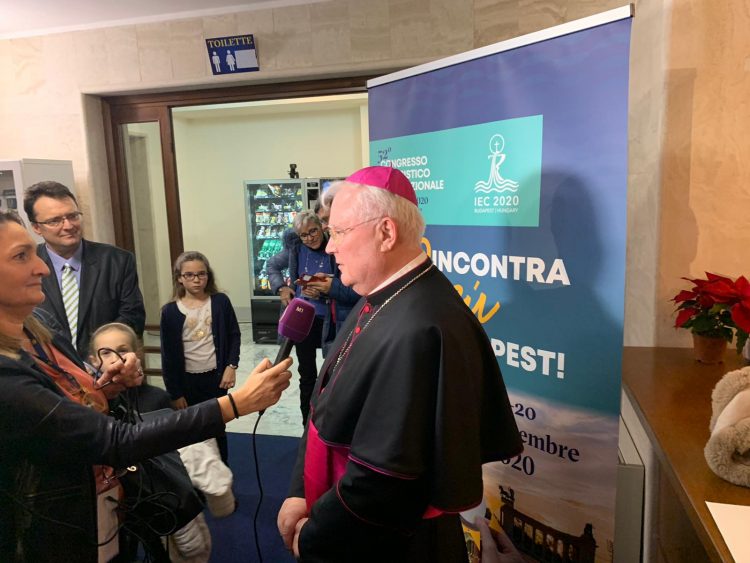
IEC Secretariat




